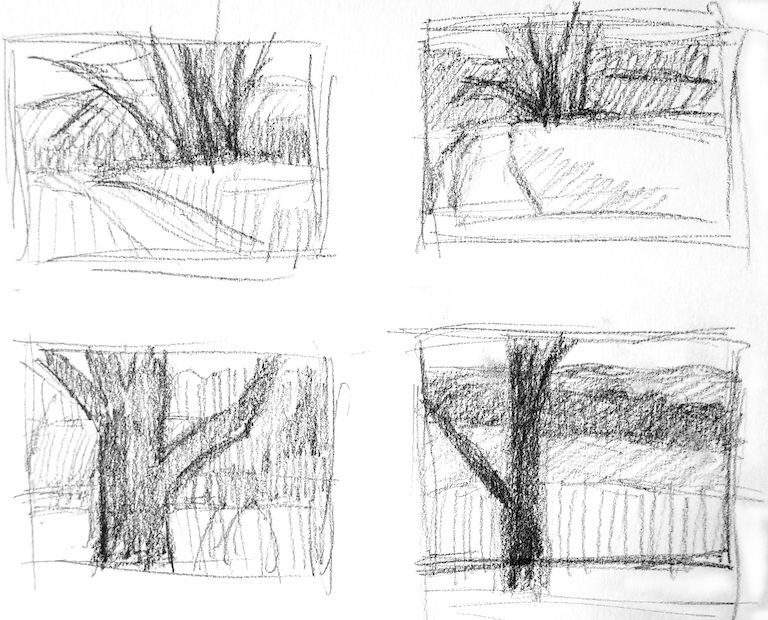
Have you ever worked on a plein air painting only to realize that some serious compositional issues existed halfway through the painting? The purpose of this post is to show you how you can use thumbnail sketches to work out these problems before you lay down any paint.
What are the advantages of using thumbnail sketches?
- To quickly sketch different views of the subject matter
- To crop a view to make it more visually interesting
- Thumbnails help establish a strong composition
- They reduce visual elements to values and shapes thereby making the painting process easier
What’s the process for creating thumbnail sketches?
I start with a 5b or 6b drawing pencil which allows me to get a dark black. I quickly sketch a small box (approximately 2”x3”) that’s proportional to the canvas or panel that I’ll be painting on. I sketch loosely and reduce the subject matter to simple, large shapes and tonal values. I limit my sketching time to 3 or 4 minutes to avoid getting bogged down with any detail. Finally, I use this thumbnail to lay out my painting.
Using this method I can create different thumbnails from different angles giving me options to choose from. Additionally, these sketches help me decide what view will work out best as a painting.
Examples of usage
Please note the four thumbnails on the top of this post. I’ve sketched out a couple of thumbnails to choose from. I think the top two are boring . The bottom two have a better composition with a strong focal point. But the bottom-right one is a better value study and I chose this one to create a painting.
Below you can see the quick thumbnail sketch that I used to begin the painting on the right. Looking back, I should’ve better developed the different values in the thumbnail.

How they improve your plein air painting
- A thumbnail sketch will quickly show if a view is worth painting
- Give the ability to crop or change elements that won’t work in the painting
- Help in the painting process by simplifying the view to simple shapes and tonal values
- You can quickly rework elements to improve the composition
Summary
- When painting plein air, use thumbnail sketches to quickly lay out your painting
- Sketch out approximately 2”x3” boxes that match the proportions of your painting surface
- Work out any compositional issues in the thumbnail
- Establish tonal values in the thumbnail that can transferred to the painting
- Use the thumbnail to lay out your painting
Do you use thumbnail sketches when painting plein air? How do you avoid compositional problems?